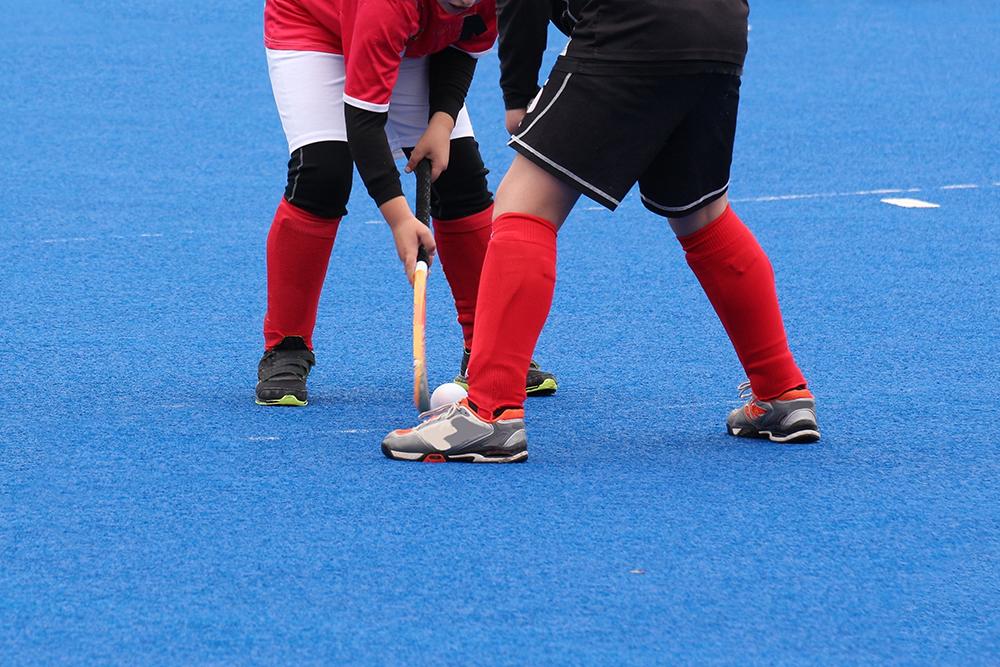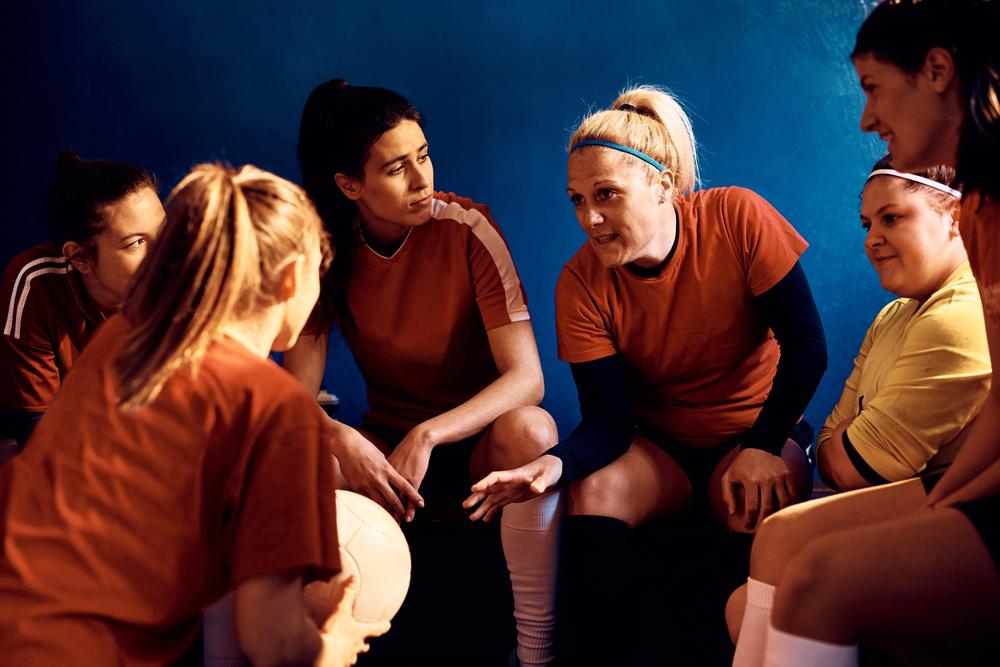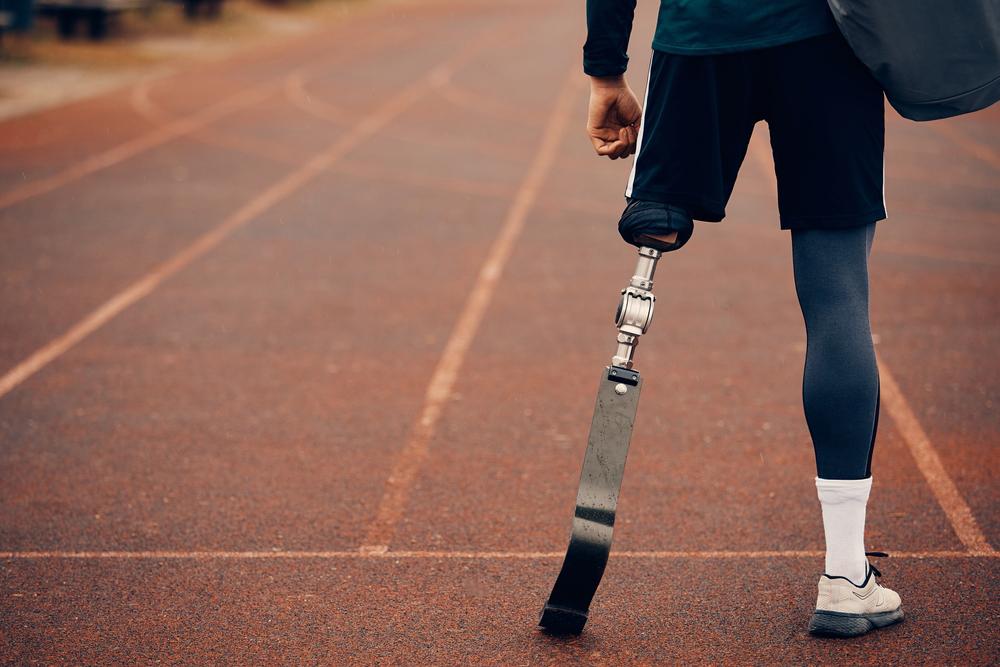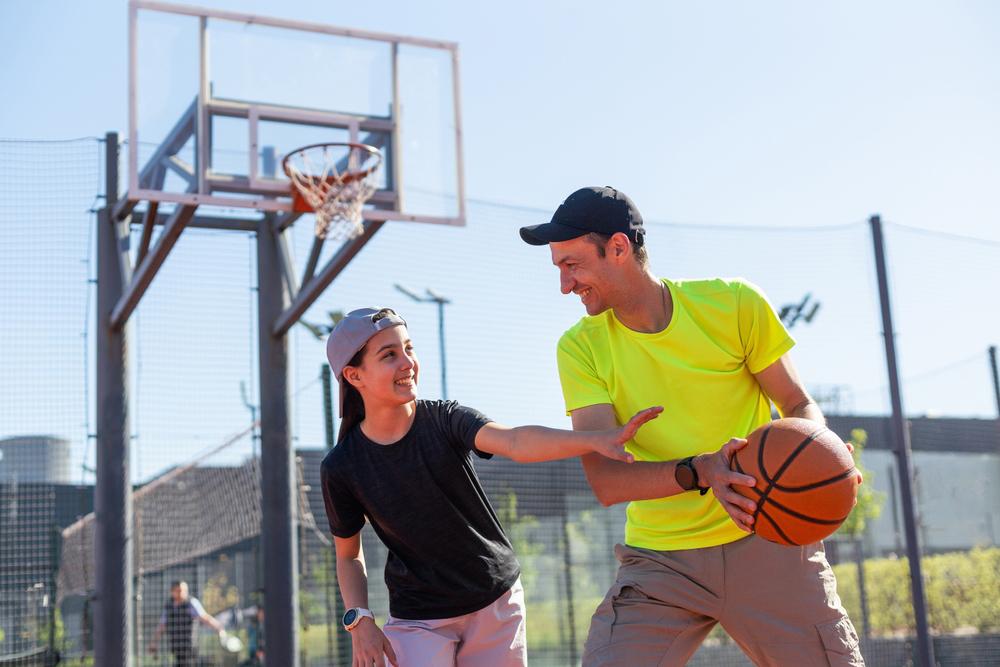 Content Warning: This article contains mentions of bullying.
Content Warning: This article contains mentions of bullying.
Whether your athletes are shouting at each other, not speaking at all, or fighting on the field, conflict is a natural part of any team dynamic. But as a coach, you can take steps to make sure that when conflicts do arise, there are systems in place to both solve them and make the team stronger. Here, Nadia Kyba, MSW, TrueSport Expert and President of Now What Facilitation, shares some of her favorite tools to manage conflict within a team.
Understand that conflict can be good
“It’s important to understand that conflict is not bad,” says Kyba. “Conflict is what helps teams grow. If you show me a team that hasn’t been through conflict, they will be a team that doesn’t take risks. They’re a team that tiptoes around each other because they don’t want to stir things up or address issues.”
Even if your team doesn’t voice conflict, it’s inevitable. If a team is so conditioned to pretend conflict doesn’t exist, there’s a problem in communication and the team will ultimately suffer. Encourage your team members to be comfortable voicing concerns and issues.
Start the year with a discussion about conflict resolution
“When teams have systems in place to anticipate, to recognize, and to work through conflict, it’s easier to move through small and large conflicts as they arise,” says Kyba. “”I think it’s important for all parties to have a conversation – at the beginning – about conflict and know that it’s a typical thing that happens on every team. Explain that conflict helps teams grow and isn’t something to be afraid of. That helps athletes develop trust, and when they have trust, they can take risks and perform better.”
She recommends holding this team meeting early in the year for athletes and discussing not just how to handle conflict amongst themselves, but also when a coach should be involved. A similar meeting between the coach and parents will also help avoid parent/child versus coach/team problems.
Set clear standards
A large portion of team conflict comes when athletes feel resentful for things like not being put on the starting lineup, Kyba explains. Start the season by setting clear standards (and sticking to them), so that athletes aren’t confused about why they are or aren’t getting certain things.
The same applies to ‘hardline’ rules like “no bullying, sexist, racist comments, etc.” Conflict between teammates can be positive, but bullying behaviors are not acceptable in any situation and setting consequences for them early is important.
“But make sure the standards are very clear: terminology like ‘bullying’ or ‘respecting people’ can be very vague,” Kyba adds. “Use descriptive language to describe behaviors so that it’s super clear what’s expected. Don’t use nouns, use verbs.”
For example, instead of saying, ‘Don’t be a bully.’ Say, ‘Don’t bully someone,’ or ‘Don’t exclude someone.’ Using descriptive words to describe an action or behavior – make it specific.
Recognize conflict early
As a coach, it’s important to know what conflict looks like. “Typical non-verbal signs can include people rolling their eyes, people not showing up to practice, and any kind of unsportsmanlike or unfriendly behavior,” explains Kyba. The earlier you can pick up on conflict on your team, the easier it will be to resolve.
Bring it to real life
Kyba cautions against allowing any conflict to fester in text or email format. “I see a lot of teams fall down because they avoid real life interactions and turn to technology, like emailing or texting,” she says. “So much of our communication is actually done non-verbally – tone of voice, body language, etc. And when you have an email or a text, you’re missing all of that.”
Technology also makes it easy to talk at each other versus to each other. Use technology to set up conversations, but don’t use text to try to resolve a conflict.
Read it back
Because technology usage amongst the younger generations is inevitable, teach them good habits. One that Kyba recommends is simply reading the text of an email out loud before sending it.
“I tell coaches to have athletes read an email out loud in that first team meeting but read it twice with different tones of voice. This is a great exercise because it really drives home how tone can impact how a person receives a message and the problem with technology.” And if you must text, Kyba is fond of adding emojis in order to convey tone, even if it feels silly.
List positions and interests
In mediations, Kyba uses a process that looks at positions and interests. “In any conflict, you’ll have two people who often are attached to different solution to the conflict,” she says. “It’s really important to not get stuck in those positions. Try to find what’s actually important to the athlete, because often, it’s deeper than the conflict that was presented to you.”
For example, if a child is angry that he never gets to start in a game, begin the conflict resolution by asking why it’s important to him that he starts. The answer may be that the athlete wants to take on a more prominent leadership role in the team or is worried about how not starting will impact college team selections. Once you understand the athlete’s position and interest within the conflict, it’s easier to find a solution that actually fits the conflict, not a Band-Aid to take care of the immediate issue.
_____
Kyba concludes, “If a coach sets really concrete and solid systems at the beginning of the season, it just makes their job a lot easier because the team should be fairly self-sufficient. Set up opportunities to have regular team meetings, so that if there are issues going on, people know that there’s going to be a forum to address problems,” says Kyba.
She adds that while the team should be largely self-managing, a coach still needs to pay attention to non-verbal cues, such as people being excluded or not coming to practice.



